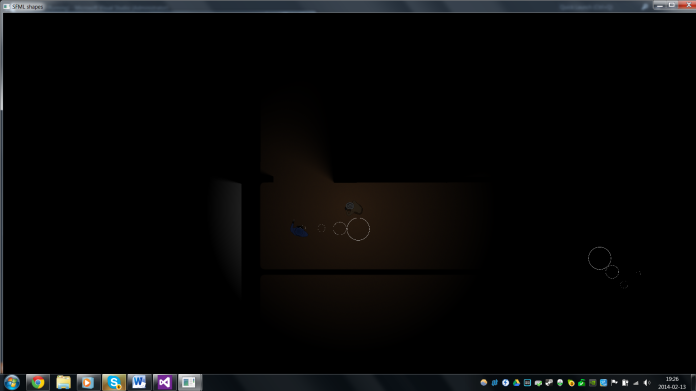For soon four weeks, I and my group, have been developing a game we call With Intent (working title) which originates from the idea of Escape, which was a concept created by another group, about 3 month ago.
Each week I will pick an Artifact (piece of the game) and try to explain why we did as we did, how it went and if I would do it any other way next time.
……
The Artifact I have chosen to write about this week is Guards.
So, what is a guard? And how will they work?
The guard is the standard enemy (only enemy type) in With Intent. They will, among other things, be patrolling the level by following a fixed route. As long as the player is not seen or heard by any of them they will continue patrolling until the end of days. But if he/she is spotted they will try to shoot. If the player gets out of their line of sight before he/she is killed, the guards will start searching and there will no longer be any pattern to their movement. In this stage the game just became a lot harder to complete.
The guards will have different tasks they will do.
They will have one of three starting tasks:
- Patrol: They will go from waypoint to waypoint. At each waypoint they will take a short break to look around before heading for the next.
- Idle: They stand at one spot looking around. They might appear on crossroads or in rooms.
- Sleeping: Standing or sitting with their eyes closed. Will only be disturbed by sounds or contact.
And four tasks when disturbed:
- Investigate: If they heard you out of their field of view they will investigate the sound. If they get to where the sound was made they will look around for a short while and if the player is not seen, they will return to what they did before.
- Search: If they know of the player but have not seen him/her for a while they will start searching. Going from room to room, looking around. They will start searching in the rooms close to where they were when they last saw the player, and then increase their search area. If they are searching, they will not stop searching unless they find the player.
- Shoot: If the player stands in their field of view for more than about one second they will start shooting, and that is pretty bad.
- Chase: If they lose the player from sight the guards will start chasing. They will run to the last known location, either by sight or sound. If they can’t see or hear the player when they reach that place, they will start searching.
We want the game to be a stealth game where confrontation is very bad. If they shoot at the player, it will most likely be game over. To avoid that, there will be three main ways for the player to know if a guard is nearby.

- Each of guard, except sleeping ones, will carry a flashlight, pointing in the direction they are looking (not implemented yet).
- The ripples from the sound they make when they are walking or sleeping.
- Their actual body is within the player’s field of view, this will be the only way to detect sleeping guards, unless they are snoring.
Hello André!
Interesting read. We have also experimented and talked some about the guards and how they will behave. To be honest, I did not think that guard should have that much states but when I think about it, it’s pretty good to have.
From what I can tell by the image, a top would be to lighten up the game a bit. From just watching the image, I get a little bit bored and that feeling also came to me during the playtesting last tuesday.
I’m also curious about how you are going to insert sound detection. Can sounds go trough walls? If so, how should the guard react to it? Should it go the straight way to the player or folow a pattern, like pathfinding or something like that? And if the sound can’t go trough walls and other sound obstacles
Anyway, here’s some feedback!
You say that confrontation is very bad. I think that might be a bit boring since you have not so much to do but hiding from the only living things in the game(from what I read). Maybe you could implement some interactions with anything to make the game not so “one-task-game” -ying.
I also wanted to know which states can transist from which states. I know that real FMS’s, (Finite State Machines) setup rules on which states can go from which states etc.. but since we have’nt learnt that yet I doubt it will be implemented.
Other than that, I loved the different states and how it was described the behaviours in detail.
Great post, André!
I think this post covers things for FSM
http://wiki.ros.org/decision_making/Tutorials/FSM(C%2B%2B)#FSM_transitions